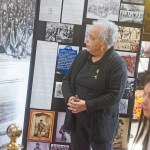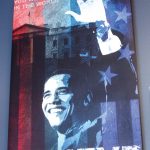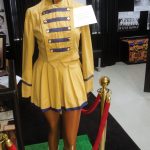Seeing history in person (WITH GALLERY)
Published 12:00 am Saturday, March 2, 2024













Burlington students take part in Black History Month bus tour
BURLINGTON — For the final week of Black History Month in February, students at Burlington Elementary School got a first-hand look at historic sites in Lawrence County, as well as a chance to visit one of the Tri-State’s newest institutions dedicated to preserving history.
Third graders from the school took part in a four-stop bus tour on Monday, traveling throughout Ohio and Kentucky.
Trending
The first stop on the trip was the historic Macedonia Baptist Church, located near the school on a hill in Burlington.
The church, built in 1849, has been closed and sat vacant, until it became the recipient of numerous grants in the past few years toward its renovation and preservation as a community history center.

Burlington Elementary School students tour the historic Macedonia Baptist Church, the first Black church west of the Appalachian Mountains, in Burlington, as part of the school’s Black History Month bus tour on Monday. (Submitted photo)
The oldest Black church west of the Appalachian Mountains, its congregation was founded by many who had escaped slavery across the river in Virginia (now West Virginia) and Kentucky and made their way to the free state of Ohio.
Following the stop at the church, the bus took the students to Ashland, Kentucky, where they paid a visit to the C.B. Nuckolls Community Center and Museum, which opened last year.
Founded by Darrell Smith and Bernice Henry, the museum boasts a large collection in its first year of operation, with exhibits on Black history in the Tri-State.

Burlington Elementary School students look over exhibits at the C.B. Nuckolls Community Center & Black History Museum in Ashland, Kentucky as part of the school’s Black History Month bus tour on Monday. (The Ironton Tribune | Heath Harrison)
The museum is named for Nuckolls, who served as principal of the Booker T. Washington School, which served Black residents of Ashland until 1962, until the “separate, but equal” segregated policies of education were ended.
Trending
Nuckolls’s desk is on display in the museum, as well as one of his suits.
Henry, who attended the school, explained to the children that Nuckolls always took his job seriously and made it a point to dress up.
“He was proud of who he was,” she said, noting that his family followed him into the field of education.
She also noted his height.
“He was small in stature, but big in character.”
Many exhibits in the museum are related to the school, including a handmade majorette uniform, as well class photos.
Local figures from both the past and present are highlighted, such as Teresa McKenzie, the veterans services coordinator for Ohio University Southern, as well as the late Ella Ramsey, of Ashland, a civil rights and community leader from Ashland, who is also the mother of Harriet Ramsey, Burlington Elementary’s longtime librarian.
National and international figures are also featured in the collection.

A display, dedicated to abolitionist U.S. Rep. Thaddeus Stevens, who championed to passage the 13th Amendment to the U.S. Constitution outlawing slavery, hangs in the C.B. Nuckolls Community Center & Black History Museum in Ashland, Kentucky. (The Ironton Tribune | Heath Harrison)
One photo on display on the wall is of Thaddeus Stevens, the U.S. representative from Pennsylvania whose steadfast abolitionist beliefs led to his championing the passage of the 13th Amendment in Congress, which ended slavery in the United States.
Exhibits depict Black contributions to music and the arts, while artwork in the collection depicts national and international figures, such as former President Barack Obama and Nelson Mandela, the anti-apartheid leader who became South Africa’s president.
Smith that the museum recently had a fundraiser, which he said had heavy attendance from the community, with more than 200 people coming out.
He said the museum is hoping to get more visits from local schools, pointing out that Ironton recently paid a visit as well.

Burlington Elementary Schools students make a stop at Crabbe Elementary School in Ashland for lunch, as part of the school’s Black History Month bus tour on Monday. (The Ironton Tribune | Heath Harrison)
Following their trip to the museum, the students went to Crabbe Elementary School, located on the edge of Central Park in Ashland, where they were greeted by that school’s principal, Uriah Tolbert.
Tables were set up outside, on the unseasonably warm day, and Burlington took one side and Crabbe third graders took the other for a joint lunch.
“Mingle and tell them about who you are,” Tolbert told his students, as the two schools enjoyed a meal together.

Burlington Elementary School students tour the Burlington 37 Cemetery as part of the school’s Black History Month bus tour on Monday. (Submitted photo)
Following lunch, as the Burlington students returned to Ohio, they made one last stop before getting back to their school, this time at the Burlington 37 Cemetery
Located on Center Street in Burlington, the cemetery, which now has hundreds of burials, is named for those who were freed from slavery in the will of wealthy Virginia plantation owner James Twyman. All of those in slavery under Twyman were ordered freed in fall 1849, other than five deemed too elderly to make the journey to Ohio, where his will stated they would be provided for until their death on a farm, purchased from Isaac Frampton in Burlington.
A monument stands in the cemetery, honoring those who made the trip across the Ohio River, who are buried there.

















